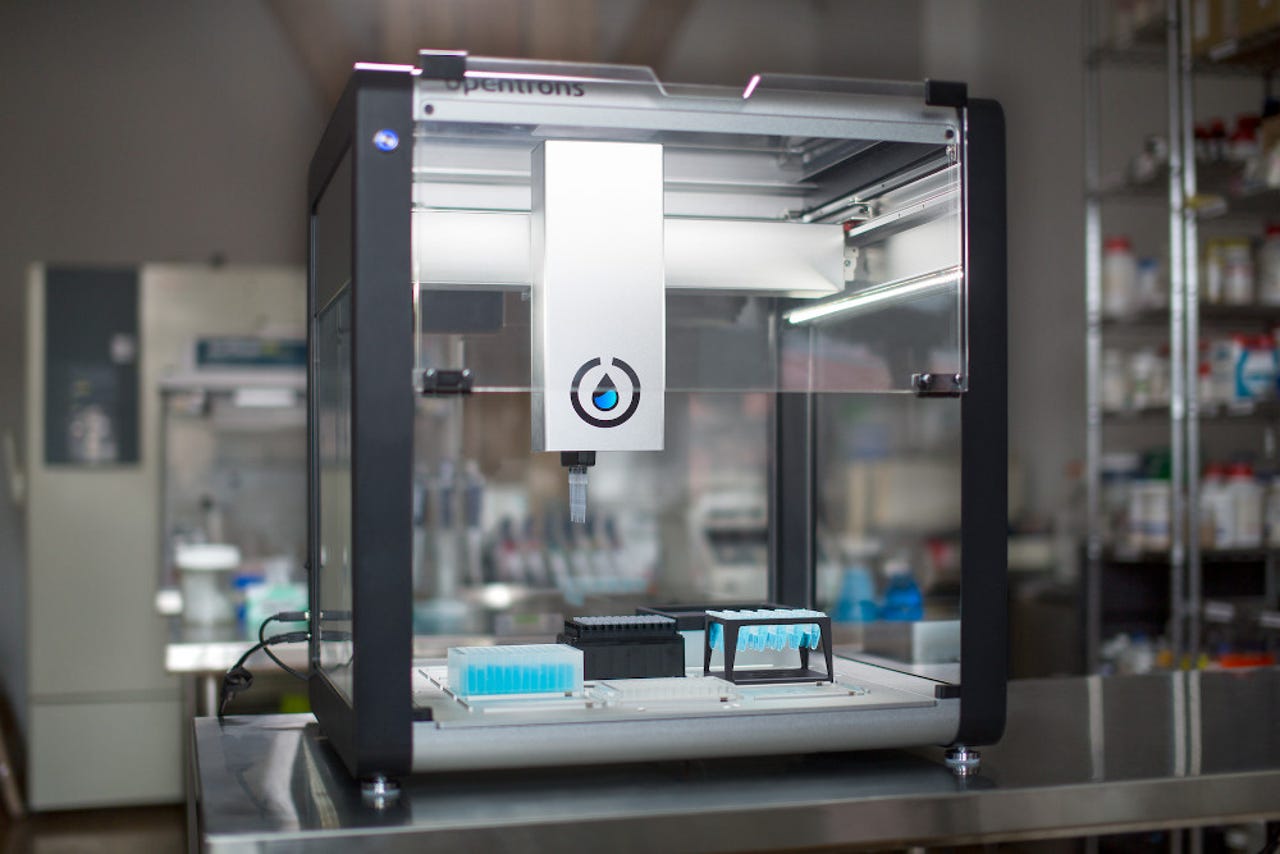Opentrons releases next-gen robot in bid to become the "PC" of biology labs


If you've ever worked in a life sciences lab, there's a good chance you hate one task more than any other: Pipetting liquid in small quantities with no margin for error.
Automated pipetting solutions exist, but up to 90 percent of scientists around the world still run experiments manually because the cost and complexity of lab machines is prohibitive.
Following a trend we're seeing with cheap table-top 3D printers, which are fast bringing advanced manufacturing to the masses, a company called Opentrons just announced a new version of its small pipetting robot, which costs about $4000, far less than other automated lab solutions.
The advances in 3D printers have driven the costs of precision automation down significantly, in large part paving the way for spinoff technologies like this.
Opentrons says its hoping to become the PC of biology labs. It's a good example of an innovative company finding a small niche with potentially huge consequences.
Turns out hand-pipetting is responsible for a high degree of error in laboratory work.
I asked a doctor friend about this and he shuddered at memories of his undergrad biology labs.
A list of common causes for error in pipetting include failure to wet the pipette tip, failure to take the temperature of a substance into account, failure to wipe pipette tips after working, pipetting at an angle ... it goes on.
Introducing error at the measuring stage is particularly insidious, as those mistakes are difficult to track down.
"Life sciences investment is surging because the potential for this industry to innovate everything from drug development to bio-manufacturing is exciting and inevitable," said Vinod Khosla, Partner in Khosla Ventures, which just led Opentrons' $10 million seed round.
The robot, which operates on an open API, following another encouraging trend in robotics, comes with a library of scientific protocols. It can be modified to work with Amazon Alexa for voice activation.
Opentrons is having a good run. The company, founded in 2013, has doubled its customer base and its employee headcount every six months since its founding.
It's a good lesson for roboticists looking to enter the market with a startup technology: Find the use case no one else is pursuing and take laser focus.